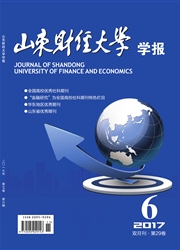

 中文摘要:
中文摘要:
提升信息化水平的空间协调度对优化全域发展格局具有重要意义。基于泰尔指数的测度表明2001-2013年间我国信息化水平省际差异仍较为显著且存在有波动的扩大化趋势,ER等指数则显示空间极化程度也有所增强。空间收敛模型证实空间互动状态下我国省域信息化水平存在条件收敛机制,综合考虑地理距离和经济落差后,产业结构升级对信息化水平提升具有显著的本地效应,开放度对邻近区域信息化水平提升具有显著的积极溢出作用,但城市化和市场化进程则会对邻近区域信息化发展产生压力。为此需统筹区际信息化水平,完善滞后区域信息化生态系统,以缩小省际间信息鸿沟。
 英文摘要:
英文摘要:
Enhancing spatial coordination of informatization level has an important significance for optimizing global development pattern. Measured by Theil index, China provincial difference in informatization level during 2001 and 2013 is still significant with a trend of fluctuation expansion while ER indexes show that the spatial polarization degree is also enhanced. Spatial convergence model confirms that China provincial informatization level under spatial interaction condition possesses a conditional convergence mechanism. Considering the geographical distance and economic gap, industrial structure upgrading has a significant local effect on informatization level promotion, and the openness level has a significantly positive spillover effect on local informatization level promotion while the process of urbanization and marketization brings about pressures on local regional informatization development. Consequently, it is necessary to balance regional informatization level and improve the informatization ecosystem in backward areas so as to narrow provincial information gaps.
 同期刊论文项目
同期刊论文项目
 同项目期刊论文
同项目期刊论文
 期刊信息
期刊信息
